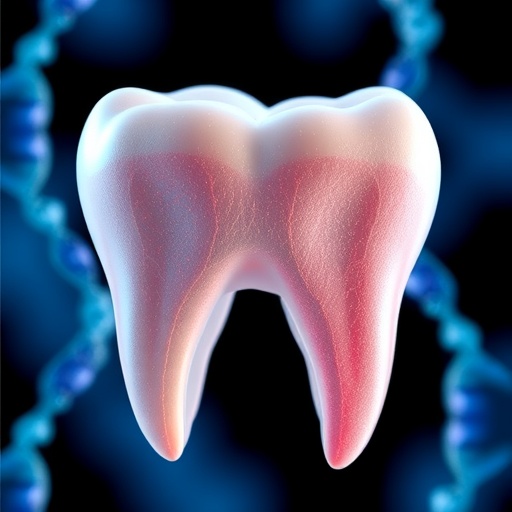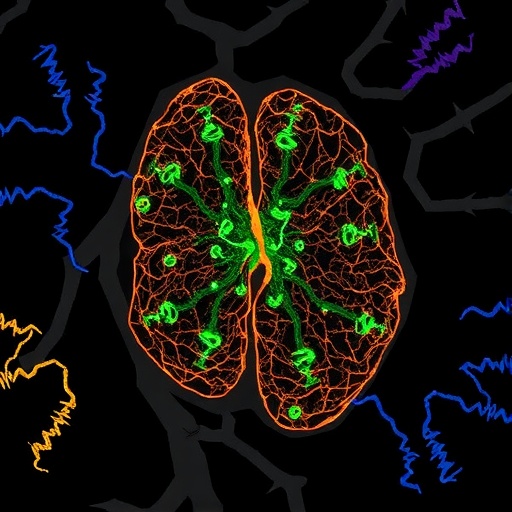In a groundbreaking advancement bridging dental science and genomics, researchers have unveiled a comprehensive genome-wide association study (GWAS) exploring the genetic underpinnings of pulpal and apical diseases. These disorders, which include pulpitis, apical periodontitis, and their related complications, pose significant clinical challenges due to their complex etiology and unpredictable progression. Traditional understanding has largely implicated infectious and inflammatory processes, yet the genetic susceptibilities influencing individual differences in disease incidence and severity have remained enigmatic until now.
The study, spearheaded by Salminen, Hyvärinen, Ritari, and colleagues, harnessed cutting-edge genomic methodologies to map genetic variations across thousands of individuals affected by pulpal and apical diseases. Using high-throughput genotyping platforms and rigorous statistical models, the researchers identified a constellation of loci significantly associated with disease risk. This pioneering effort marks the first extensive GWAS dedicated to these conditions, setting a new standard for precision dentistry and personalized oral healthcare.
At the crux of their findings lies the intricate interplay between host genetic factors and the pathological inflammatory responses that characterize these dental diseases. Pulpal and apical diseases arise when bacterial invasion triggers immune activation within the tooth’s pulp chamber and surrounding apex, leading to tissue necrosis and bone resorption. Yet, why some patients experience aggressive disease progression while others maintain resilience has been a long-standing mystery. The authors’ genomic data reveal that allelic variants in immune regulatory genes, extracellular matrix components, and cellular signaling pathways critically modulate susceptibility and outcomes.
.adsslot_nP7SmaEXKN{ width:728px !important; height:90px !important; }
@media (max-width:1199px) { .adsslot_nP7SmaEXKN{ width:468px !important; height:60px !important; } }
@media (max-width:767px) { .adsslot_nP7SmaEXKN{ width:320px !important; height:50px !important; } }
ADVERTISEMENT
One of the most striking discoveries involves variants in genes encoding toll-like receptors (TLRs), which are pivotal in pathogen recognition and initiation of innate immunity in the oral cavity. Alterations in TLR function can exacerbate or diminish inflammatory signaling cascades, thus shaping the host’s response to bacterial biofilms commonly found in dental caries and periodontal infection. This insight not only elucidates disease mechanisms but also opens avenues for targeted immunomodulatory therapies that may transform clinical management from reactive to preventative.
Additionally, the genomic data spotlight several novel loci not previously associated with dental pathology, underscoring the complex polygenic nature of pulpal and apical diseases. Among these are genes implicated in neural development and pain perception, providing a molecular basis for the considerable variability in symptom expression among affected individuals. Understanding these genetic differences promises to improve diagnostic precision, allowing clinicians to anticipate disease trajectories and tailor interventions accordingly.
The methodology employed in this study represents a gold standard in contemporary genetic epidemiology. Employing stringent quality control measures, population stratification correction, and replication cohorts, the investigators ensured robustness and reproducibility of their associations. The study’s unprecedented sample size, combined with deep phenotyping through clinical examination and radiographic confirmation, enhances statistical power and clinical relevance. This multidimensional approach offers an exemplary model for future research into odontogenic diseases.
Moreover, this research emphasizes the importance of integrating genomics with microbiome analyses and environmental factors to construct a holistic understanding of dental disease pathogenesis. While genetic predisposition sets the stage, the microbial milieu and lifestyle determinants such as oral hygiene practices and systemic health conditions likely modulate disease expression. The authors advocate for an interdisciplinary strategy to unravel these complexities, heralding a new era of systems dentistry.
The implications of these findings extend into public health and personalized medicine. By identifying individuals at elevated genetic risk, preventive strategies can be optimized, potentially reducing the high global burden of tooth loss and chronic oral infections. Furthermore, pharmacogenomic approaches may emerge from this research, as understanding genetic variants influencing drug metabolism and immune response could refine antibiotic and analgesic prescribing practices, thereby mitigating side effects and resistance.
Importantly, this study contributes to the growing field of dental genomics, which has historically lagged behind other medical specialties. It underscores dentistry’s shift from empiricism to evidence-based precision, integrating molecular biology and clinical science. By decoding the genetic architecture of pulpal and apical diseases, the research lays a foundation for novel diagnostic biomarkers and therapeutic targets, ultimately enhancing patient outcomes.
The presented GWAS also stimulates questions regarding the evolutionary conservation of these genetic variants and their roles beyond oral health. Some discovered loci participate in systemic inflammatory processes, hinting at potential links between dental diseases and broader systemic conditions like cardiovascular disease and diabetes. This connection bolsters the paradigm that oral health is inseparable from overall health, further motivating comprehensive patient care models.
This pivotal study was published in Nature Communications, a journal renowned for disseminating high-impact interdisciplinary research. The team’s collaborative effort, drawing expertise from genetics, dentistry, and bioinformatics, exemplifies the multidisciplinary synergy required for such advances. Future research avenues proposed include functional studies of identified variants and longitudinal cohort analyses to monitor disease progression in genetically stratified populations.
Ultimately, the integration of genomic data into dental practice heralds transformative possibilities. From enhancing risk assessment tools and refining therapeutic regimens to informing public health policies, this research signals the dawn of genomic-informed dentistry. Patients may soon benefit from molecular diagnostics that facilitate early intervention and biomarker-guided treatments, reducing the prevalence and severity of pulpal and apical diseases.
This study also serves as a call to action for increased investment in dental genetics research, urging the scientific community to capitalize on rapidly evolving genomic technologies. By doing so, the long-neglected burden of endodontic diseases can be addressed more effectively, improving quality of life on a global scale.
In summary, Salminen and colleagues’ genome-wide association study elucidates the genetic landscape underlying pulpal and apical diseases with unprecedented detail. Their findings reveal crucial gene variants that influence immune response, pain perception, and tissue integrity, offering new insights into disease mechanisms. This research paves the way for personalized and precise dental care approaches, marking a significant leap forward in oral health science. As the field progresses, such discoveries will increasingly shape the future of dentistry, marrying genetics with clinical innovation to combat these pervasive diseases.
Subject of Research: Genetic factors influencing pulpal and apical diseases
Article Title: Genome-wide association study of pulpal and apical diseases
Article References:
Salminen, A., Hyvärinen, K., Ritari, J. et al. Genome-wide association study of pulpal and apical diseases. Nat Commun 16, 6774 (2025). https://doi.org/10.1038/s41467-025-61721-1
Image Credits: AI Generated
Tags: apical periodontitis researchclinical challenges in tooth diseasesdental genomics and precision medicineemerging trends in dental researchgenetic factors in dental healthgenetic susceptibility to pulpitisgenome-wide association study tooth diseaseshigh-throughput genotyping in dentistryinflammatory responses in tooth diseasesmapping genetic variations in dental disorderspersonalized oral healthcare advancementspulpal disease genetics






